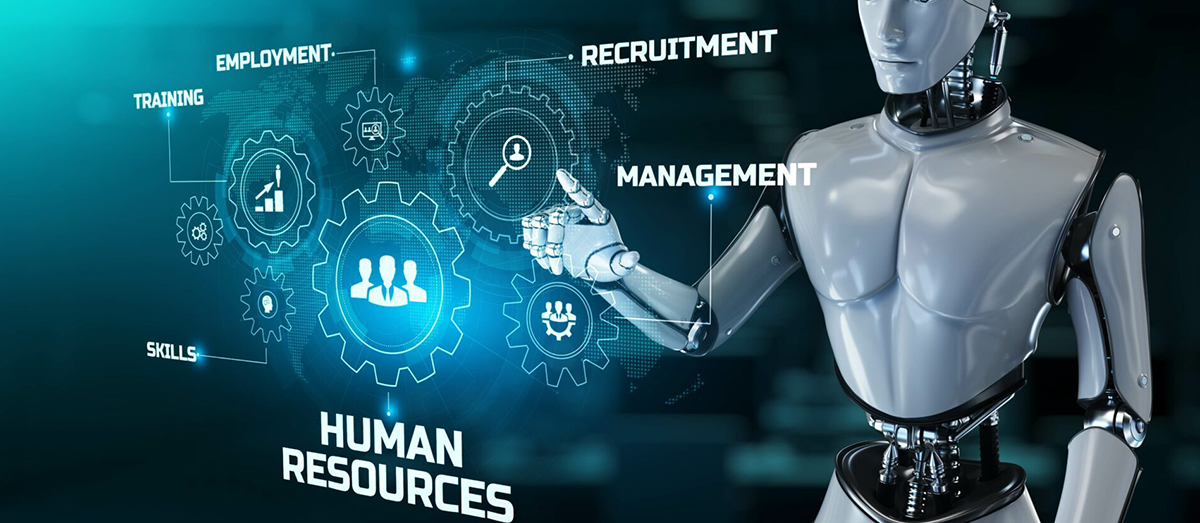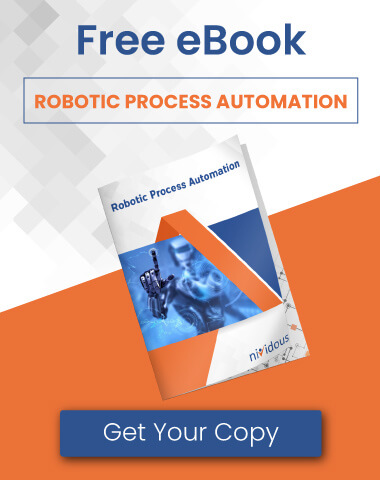For much of 2021, companies across the U.S. struggled to hire and retain workers. According to the Federal Reserve’s Beige Book (December 1, 2021), employers experienced a “robust demand for labor but persistent difficulty in hiring and retaining employees,” as a result of childcare issues, retirements, and COVID safety concerns.
These trends are, of course, temporary. But as they continue to influence business operations, they’re creating significant difficulties for the teams tasked with keeping jobs filled. According to a 2021 survey of HR professionals, 67% said their department was overworked—and 42% cited exhaustion and burnout as top HR challenges.
Clearly, human resources departments are under strain, leaving managers desperate to find ways to do more with less. The top tool in this effort is HR automation—but where do you start?
Is your HR department struggling with ever-increasing work-loads?
Intelligent automation lends a hand. Want to learn more?
We asked HR managers and business owners about their experiences with automation, looking for practical tools and advice that can help your HR department run smoothly—even if the labor market continues to tighten. Here’s what they had to say.
HR Automation: What It Is And What It Can Do
When you automate a computer-based task or process, digital tools complete the work, freeing staff to focus on more valuable activities—like direct interactions with employees. In that sense, HR automation is designed to make HR work more human, not less. Many HR tasks involve document management and data entry; HR automation solutions complete these tasks without human intervention.
What kinds of HR tasks and processes can be automated?
David Rowland is head of digital marketing for the environmental health and safety (EHS) analytics platform EcoOnline, and he’s overseen plenty of HR automation efforts. According to Rowland, “You can automate just about any task or process that is repetitive and rule-based, such as payroll processing, benefits administration, and performance management.”
Bartek Boniecki, head of people at biometric photography service Passport-Photo.Online, has also introduced automation to rule-based HR tasks, including:
- Offboarding
- Vacation requests
- Payroll
- Time management
- Employee benefits
- Expense claims
Boniecki says automation in HR management “frees managers from repetitive tasks, paperwork, and data entry to handle other functions such as strategic hiring, incentive planning, career plans, or other initiatives that can serve as incentives for employees.” The result is a much more efficient management strategy.
As you might have noticed, all the above examples are rule-based; they can be automated with relatively simple, “if-this-then-that” software operations. But thanks to Artificial Intelligence (AI), many HR automation tools now go beyond rule-based tasks to perform some higher-level functions, broadening the range of HR activities that can be offloaded from human employees.
Travis Lindemoen, managing director of IT staffing agency Nexus IT Group, sees a lot of value in AI-based recruiting tools, from recruiter chatbots to intelligent screening and matching platforms.
“Using AI to perform tedious tasks like screening candidates, arranging interviews, and responding to job seekers’ questions can help HR save time and money in the hiring process.” – Travis Lindemoen, managing director of Nexus IT Group
“That’s not all,” Lindemoen says. “AI automation can also assist the HR department in making more accurate assessments. You can conduct a screening procedure that focuses more on a candidate’s credentials and relevant work experience. AI enhances the screening process by analyzing the applicant’s data and comparing it to other applications, so the HR team can rest assured that their decisions will be made without bias or prejudice.”
Altogether, HR automation leads to greater efficiency and fewer manual inputs in HR processes, says Rowland. “This leads to more consistent and accurate processing of employee data, which in turn can improve decision-making. It can also improve compliance with legal requirements by helping to ensure that all required data is captured and stored in a secure location.”
Once implemented, HR automation has powerful benefits. The only question is how to get started. First, you identify the processes that are slowing your team down. Then you just have to find the right tool for the job.
Choosing The Right HR Automation Technology
In any discussion of automation, it’s important to distinguish between tasks and processes:
A task is a single operation, like managing resumes.
When you string multiple tasks into a workflow, you’ve got a process—receiving resumes, screening them, arranging interviews, and making the hire, for example.
But automating a process from beginning to end can be a challenge for HR professionals, who may use many tools that aren’t integrated into a single system. For example, you may have a central Human Resource Information System (HRIS), an HR Content Management System (CMS), various pre-screening Software as a Service (SaaS) tools, and any number of Excel spreadsheets and email messages. While some of these platforms can automate discrete tasks, to fully automate an HR process—like the entire hire-to-retire lifecycle, for instance—you need to make these systems work together. In short, you need the kind of intelligent automation provided by the Nividous platform.
Nividous combines three technologies that essentially orchestrate the workflow of complex HR processes so they can be automated from beginning to end.
- Robotic Process Automation (RPA) operates all your key HR systems with software bots that control software through the same user interfaces a human would use. You control these RPA bots through a simple, easy-to-read dashboard.
- RPA bots are enhanced with AI capabilities, namely Intelligent Document Processing (IDP), Natural Language Processing (NLP), and Predictive Analytics, allowing them to complete more complicated tasks.
- The Nividous Business Process Management (BPM) system guides HR processes through each task within a customizable workflow. This sets RPA bots to their tasks, reports on completion, assigns key steps to human workers, and manages the entire process through a single interface.
Together, these technologies integrate varied HR technology stacks into a centralized control panel. They automate complex HR processes from beginning to end, achieving the benefits of HR automation and simplifying the job for HR managers.
Real-World Examples Of Intelligent HR Automation
Wondering what intelligent automation looks like in practice? Here are a few stories that illustrate the power of end-to-end HR process automation through the Nividous platform.
Integrating Multiple HR Software Systems To Simplify Hiring
Before deploying the Nividous platform, one manufacturer was struggling to manage its hiring process, which involved six disparate systems operated by six different departments. These siloed systems created inefficiencies and hindered visibility of the process—company leadership once lost track of the status of 6,000 open positions because there was no reporting system that could access all the hiring tools at once.
The Nividous platform was able to draw data from all these systems, connecting them to create a single solution for reporting as well as process completion.
End-To-End Automation For The Full Hire-To-Retire Pipeline
One high-tech manufacturing company’s HR team wanted to simplify its entire HR lifecycle, from creating job requisitions all the way through to employee separation. Their hire-to-retire processes used multiple cloud-based applications with no meaningful integration between them. That led to a lack of visibility, redundant verifications, bottlenecks, and recruitment delays of up to 30 days per hire.
The company used the Nividous platform to deploy RPA bots, trained to automate the entire job requisition process, within just 10 days. That alone accounted for savings of more than $90,000 per year. And the automation didn’t stop there. The BPM system organized HR processes throughout the entire job cycle, with RPA bots working hand-in-hand with human employees.
The company also relied on Nividous Hyperautomation to complete other back-office processes beyond the HR department. All told, end-to-end process automation with Nividous reduced the company’s operational costs by 40% and sped up process completion time by 60%.
Want to know how your company might benefit from HR process automation?
As these stories illustrate, the Nividous platform doesn’t just automate a single task within HR workflows; it automates the entire process. That frees HR staff to prioritize the work that really matters. Intelligent process automation dramatically increases capacity and efficiency within the HR department. And it can lead to significant cost savings, while providing better experiences for HR staff and the employees they work with.
Are your intelligent automation investments delivering real ROI?
Watch our on-demand webinar to discover strategies and frameworks for measuring genuine intelligent automation ROI that go beyond hard numbers.





